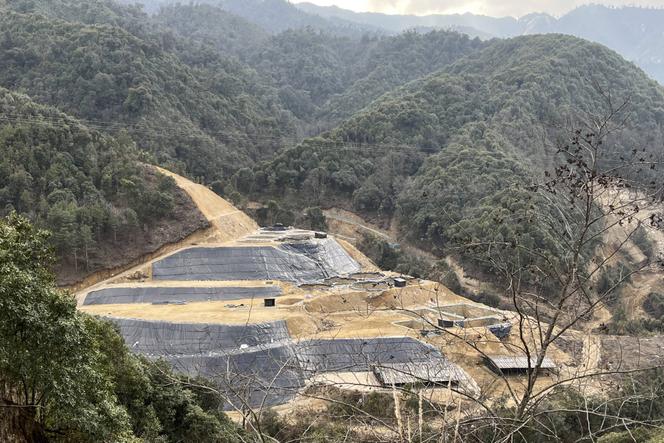


Ah Brang, a mine worker (first name changed), dragged bags of oxalic acid to the collection basin of a mine in Kachin State, northern Myanmar. He then mixed the chemical with water using a stick, protected only by a raincoat and gloves. "It feels like you're eating it when it gets in your mouth," he said. "It tastes like battery acid. Sour and tangy. Even if you wear a mask near it, your throat burns, and you cough a lot."
This testimony was collected by the Global Witness NGO. On Thursday, May 23, as the 17th edition of the Forum on Responsible Mineral Supply Chains – sponsored by the Organisation for Economic Co-operation and Development (OECD) – takes place in Paris, Global Witness has published a new study warning of the catastrophic impact of heavy rare earth mining in Myanmar.
Specializing in the fight against the plundering of natural resources in developing countries, in 2022, Global Witness already revealed the scale of mining activity in Myanmar, near the border with China, as well as its effects on the environment and populations. Dysprosium and terbium (two of the 17 metals making up the rare earths group) are essential in the manufacture of magnets for electric vehicles and wind turbines, necessary to transform the energy system and thereby move away from fossil fuels.
"Two years after our last report, we have revisited this region’s toxic mining landscape," explained the study's authors. "New trade data, satellite imagery and community testimony reveal that the world’s dependence on a remote corner of Myanmar has only deepened, and so too have the consequences for the people who live there."
In 2015, only a handful of heavy rare earth mines were operating in this mountainous region of Myanmar. By 2021, they covered an area the size of Singapore, with almost 2,700 collecting basins at 300 different sites. Over the past two years, production has doubled again, from 19,500 tonnes of heavy rare earth oxides in 2021 to almost 42,000 tonnes in 2023.
In "Special Region 1" of Kachin State, controlled by militias loyal to the ruling military junta, the number of mines has increased by over 40% – the vast majority of them illegal. Activity has also spread further south, to territory controlled by the Kachin Independence Organization, in conflict with the army. In its latest Critical Minerals Report, published on May 17, the International Energy Agency (IEA) confirmed that Myanmar is the region where magnet-related rare earth extraction has increased the most since 2015, with its share of global production rising from 0.2% to 14%.
You have 51.35% of this article left to read. The rest is for subscribers only.
